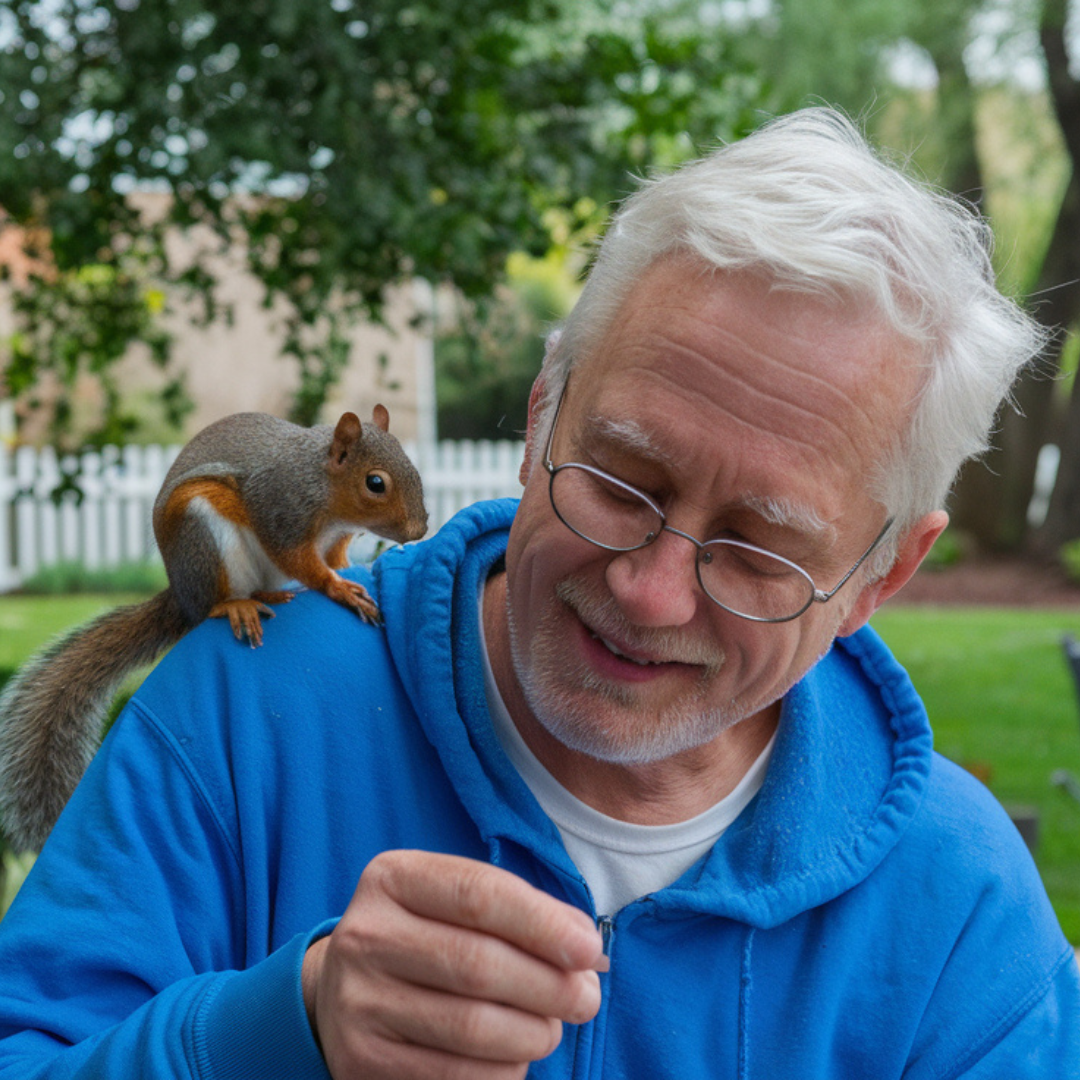When a helpless baby squirrel was discovered abandoned after a storm, the wildlife rescue team faced a unique challenge. This tiny creature, eyes still closed and unable to care for itself, would need specialized attention to survive. What followed was a remarkable journey of survival, compassion, and eventually, freedom.
A Stormy Beginning
The powerful winds had torn through the forest that night, bringing down branches, nests, and unfortunately, separating many baby animals from their mothers. Among the casualties was a tiny eastern gray squirrel, barely a week old, his pink body nearly hairless and his eyes still tightly shut.
Local resident Maria Thompson found the tiny creature while assessing storm damage in her backyard. “I almost missed him completely,” she recalled. “He was so small, barely moving in the wet leaves. I knew he wouldn’t survive on his own.”
Wildlife experts confirm that baby squirrels this young require feeding every few hours. Without their mother’s care, they quickly become dehydrated and hypothermic. The odds were stacked against this little survivor from the start.
The Rescue Mission
Maria carefully placed the baby squirrel in a small box lined with soft towels and contacted Wildlife Rescuers, a local rehabilitation organization specializing in orphaned and injured animals.
Veterinarian Dr. James Collins examined the tiny patient upon arrival. “He was severely dehydrated and cold to the touch,” Dr. Collins explained. “But remarkably, he had no visible injuries from the fall. We estimated he was about 7-10 days old based on his development.”
The rescue team named him Storm – a fitting tribute to his dramatic beginning. The real work was just beginning, as raising a baby squirrel requires extraordinary dedication. Wildlife rehabilitator Samantha Wilkins took on the primary responsibility of Storm’s care.
“Raising orphaned squirrels is incredibly demanding,” Samantha shared. “They need specialized formula fed through a tiny syringe every 2-3 hours, including through the night. Plus, they need stimulation to use the bathroom, just like their mother would provide in the wild.”
Growing Stronger
The first two weeks were touch and go. Storm struggled initially to accept the formula, and the team worried about his will to survive. But gradually, his tiny body began to fill out. Soft gray fur emerged, covering his once-bare skin. His eyes, tightly shut when he arrived, finally opened to the world around him.
By three weeks, Storm had transformed into a bundle of energy. His cage needed constant enrichment – branches to climb, materials to nest with, and safe toys to engage his growing curiosity. The rehabilitation team was careful to minimize human interaction beyond feeding and care. For Storm to return to the wild successfully, he needed to maintain his natural wariness of humans.
“It’s always a balancing act,” Samantha explained. “We want to provide everything they need to survive, but we have to remember the goal is release. We’re not raising a pet – we’re preparing a wild animal to thrive independently.”
Learning Independence
As Storm grew, the team moved him to progressively larger enclosures. By eight weeks, he was practicing his climbing skills, leaping between branches, and mastering the agility that squirrels are known for. His diet expanded to include nuts, fruits, and vegetables alongside his formula.
The most challenging phase of rehabilitation involves teaching survival skills that would normally come from a mother squirrel. The team placed nuts in hard-to-reach places, buried food to encourage natural foraging behaviors, and introduced Storm to other recovering squirrels for socialization.
“We can’t teach them everything,” Dr. Collins admitted. “Some knowledge is instinctual, but they miss crucial learning periods without their mothers. Our job is to fill those gaps as best we can and give them a fighting chance.”
Return to the Wild
After four months of intensive care, Storm was ready for a soft release. The team constructed a special enclosure in a wooded area away from roads and houses. This would allow Storm to come and go freely while still having access to supplemental food as he adjusted to full independence.
On release day, Samantha carried Storm’s cage to the prepared site. The team had mixed emotions – joy at seeing him reach this milestone, but anxiety about the challenges he would face.
“This is always the hardest part,” Samantha confessed. “You pour so much into these animals, knowing all along that success means goodbye.”
When the cage door opened, Storm hesitated momentarily. He looked back at his caretakers, whiskers twitching. Then, in a burst of movement, he raced up the nearest tree, his tail flowing behind him like a banner of victory.
The Legacy of Compassion
Storm’s story represents hundreds of similar rescues performed by wildlife rehabilitators each year. These dedicated individuals work tirelessly, often as volunteers, to give orphaned and injured animals a second chance at a wild life.
For Maria, who first discovered the helpless baby squirrel, the experience changed her perspective. “I set up a wildlife camera in my yard after Storm’s release,” she shared. “I like to think he might be one of the squirrels I see playing in the trees now. Either way, I’m more aware of the wild lives all around us that sometimes need our help.”
Wildlife experts remind us that while Storm’s story ended happily, the best outcome for wild animals is prevention. Checking trees carefully before trimming, watching for nests during storm cleanup, and contacting wildlife rehabilitators instead of attempting to raise wild animals ourselves gives these creatures their best chance at survival.
As for Storm, he represents the resilience of nature when given a helping hand – a tiny life saved through compassion, knowledge, and the dedicated work of those who understand that every wild creature deserves a chance to fulfill its natural purpose.
from:

